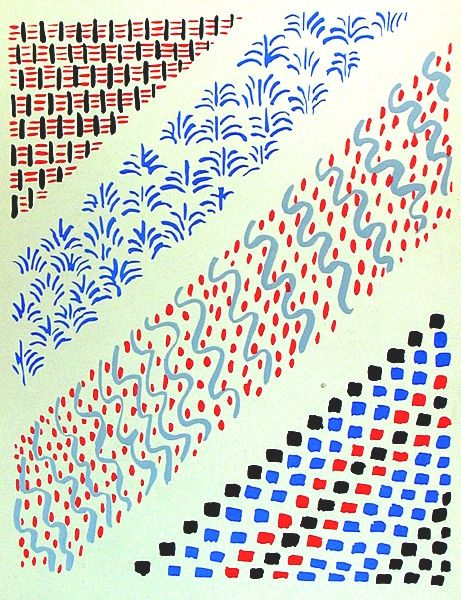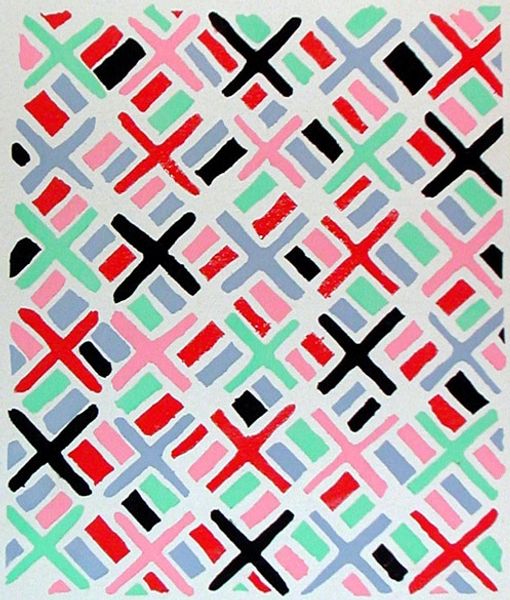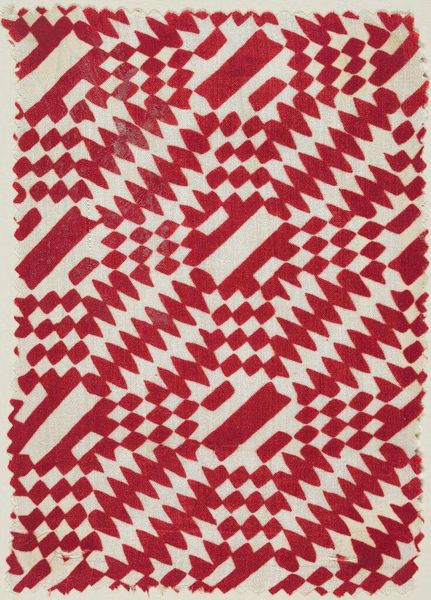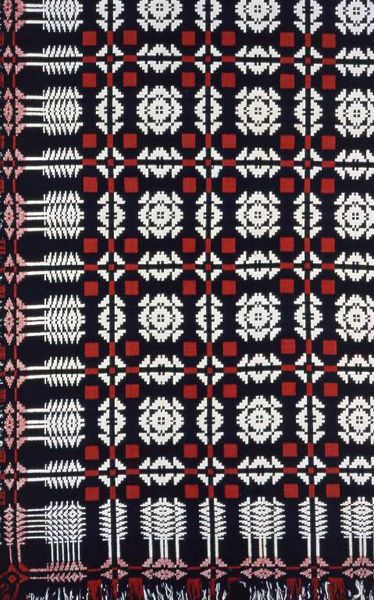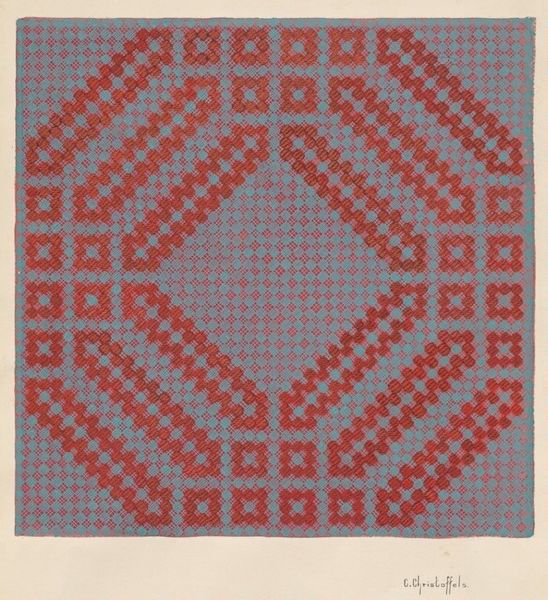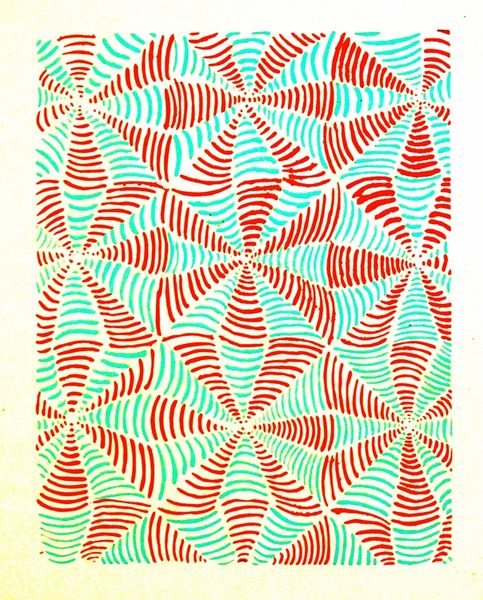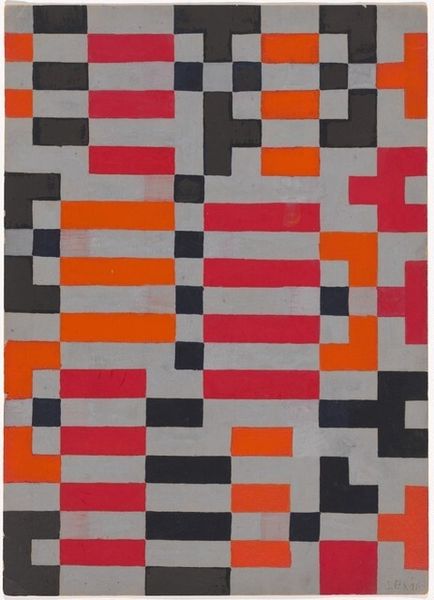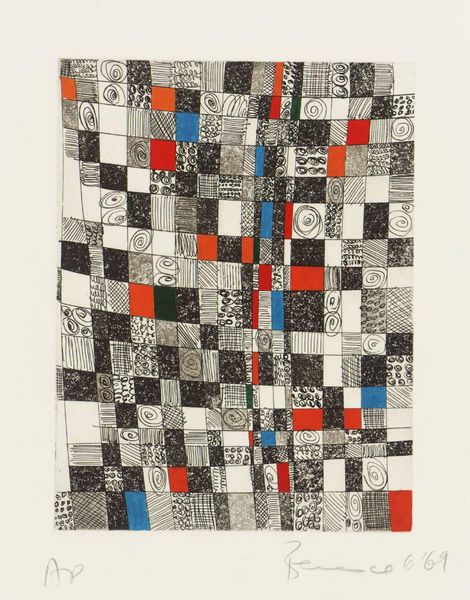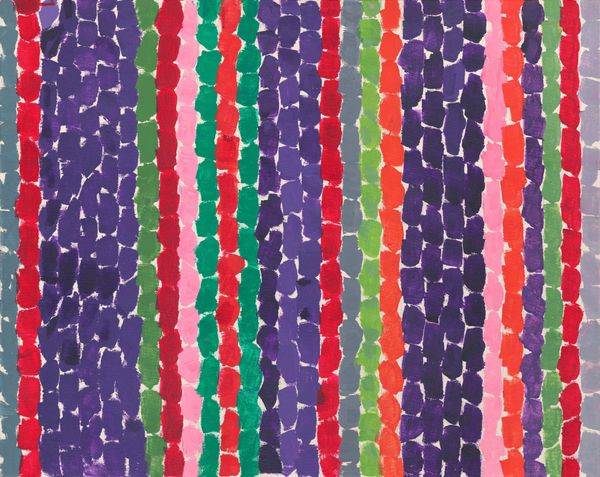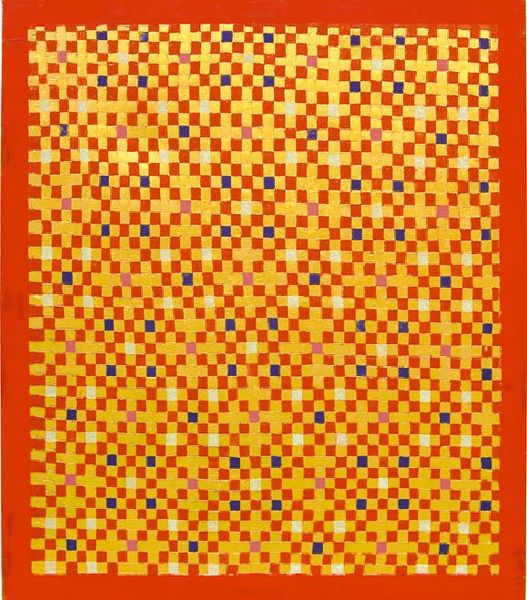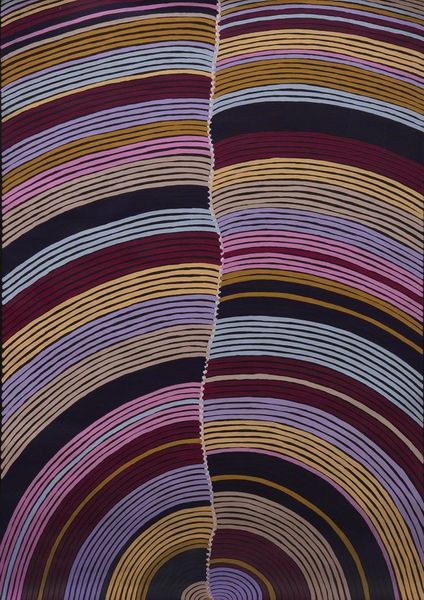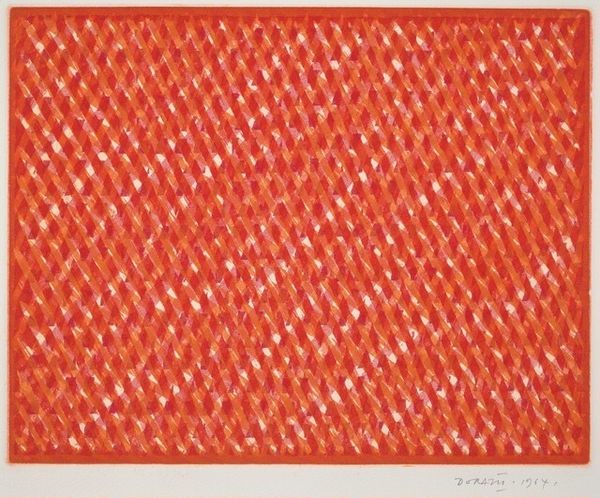
paper
#
pattern heavy
#
paper
#
geometric pattern
#
repetitive shape and pattern
#
geometric
#
repetition of pattern
#
vertical pattern
#
abstraction
#
line
#
pattern repetition
#
layered pattern
#
funky pattern
#
combined pattern
#
repetitive pattern
Copyright: Sonia Delaunay,Fair Use
Curator: Right, let’s talk about Sonia Delaunay’s "Composition 13," created in 1930. It’s a striking piece. What are your first thoughts? Editor: It feels...rhythmic. Like looking at a jazz score, all sharp angles and repeated motifs. There’s a playful energy despite the limited color palette of red and black. Curator: I find it interesting that this piece was made during a period of immense social and political change. How did Delaunay manage to stay focused on these sorts of formal concerns? Perhaps abstraction was an escape. Editor: Maybe, or maybe it was a reflection. Think about the industrialization happening then. These repeating patterns, these bold lines, echo the machine age. Look at the visible brushstrokes: it is a crafted, hand-made piece. I am curious to know whether she embraced factory automation in producing art and functional design objects. Curator: I think you've got a point there. She embraced abstraction but was always interested in how it could be applied to everyday life. Consider her textile designs – mass-produced fabrics with these same geometric patterns. It wasn't just high art, it was integrated into commercial products. Editor: Exactly. And what about the institutions supporting her work? How did galleries and patrons influence the visibility and value of these pieces, shifting the narrative from decorative art to ‘high art’? The very presentation impacts perception. Curator: That is critical. Remember that her husband, Robert, was also exploring similar styles and theories—Simultanism, they called it. The power of art critics shaped their legacies individually and in dialogue. Editor: It makes you consider the hierarchy within the art world, even today. How do we still value painting over design, when both stem from the same creative impulse, and how do cultural forces create and uphold this binary? Curator: It's a constant negotiation, isn’t it? This piece is more than just a pretty pattern, it reveals tensions about craft, industry, gender and class through the socio-political realities. Editor: True. It reminds us that even abstract art is rooted in the material conditions and the power structures of its time. I certainly won’t see this artwork the same way again. Curator: Likewise. Thinking through this work is valuable for considering design’s presence within—and also beyond—museum settings.
Comments
No comments
Be the first to comment and join the conversation on the ultimate creative platform.

